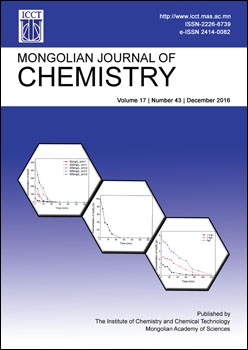Investigation on pyrolysis of some organic raw materials
DOI:
https://doi.org/10.5564/mjc.v17i43.739Keywords:
Pyrolysis, hard residue, thermal indices, epoxy resin, curing agent, crosslinking reaction,Abstract
We have been working on pyrolysis of some organic raw materials including different rank coals, oil shale, wood waste, animal bone, cedar shell, polypropylene waste, milk casein and characterization of obtained hard residue, tar and pyrolytic water and gas after pyrolysis. The technical characteristics of these organic raw materials have been determined and the thermal stability characteristics such as thermal stability indices (T5% and T25%) determined by using thermogravimetric analysis. The pyrolysis experiments were performed at different heating temperatures and the yields of hard residue, tar, pyrolysis water and gaseous products were determined and discussed. The main technical characteristics of hard residue of organic raw materials after pyrolysis have been determined and the adsorption ability of pyrolysis hard residue and its activated carbon of organic raw materials also determined. The pyrolysis tars of organic raw materials were distilled in air condition and determined the yields of obtained light, middle and heavy fractions and bitumen like residue with different boiling temperature. This is the first time to investigate the curing ability of pyrolysis tars of organic raw materials for epoxy resin and the results of these experiments showed that only tar of milk casein has the highest (95.0%), tar of animal bone has certain (18.70%) and tars of all other organic raw materials have no curing ability for epoxy resin.Downloads
2408
Downloads
Published
How to Cite
Issue
Section
License
Copyright on any research article in the Mongolian Journal of Chemistry is retained by the author(s).
The authors grant the Mongolian Journal of Chemistry a license to publish the article and identify itself as the original publisher.

Articles in the Mongolian Journal of Chemistry are Open Access articles published under a Creative Commons Attribution 4.0 International License CC BY.
This license permits use, distribution and reproduction in any medium, provided the original work is properly cited.








